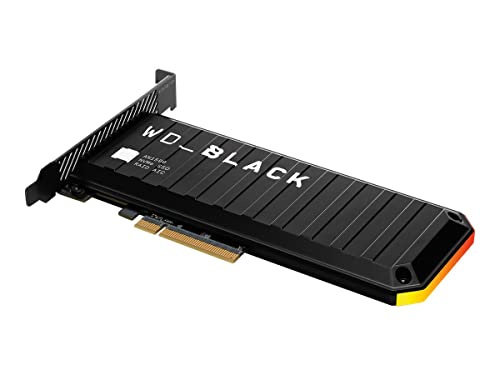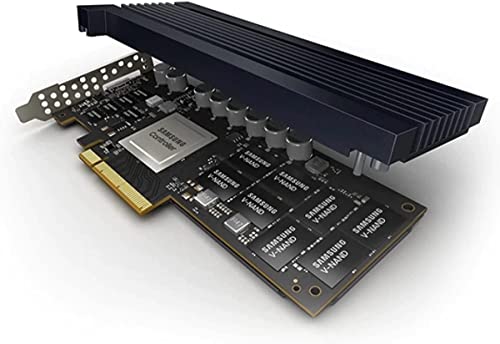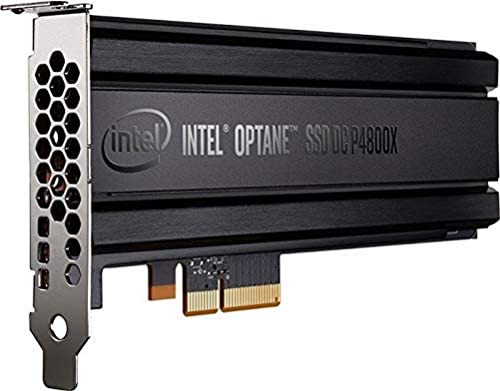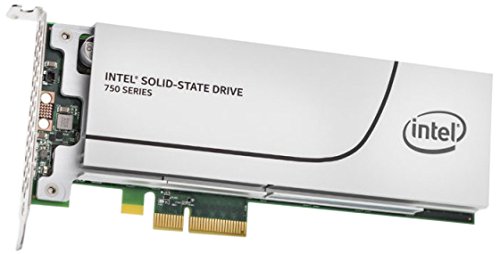Best NVMe PCIe SSD Add-in Cards – Increase Your Storage With Ease
If you already have prior knowledge of PC components, then you are probably aware of the fact that SSDs are faster than your traditional hard drives. We’re not going to linger too much on that point, because we’re talking about something a bit different today. We’re talking about NVMe PCIe SSDs, specifically Add-in cards (AICs).
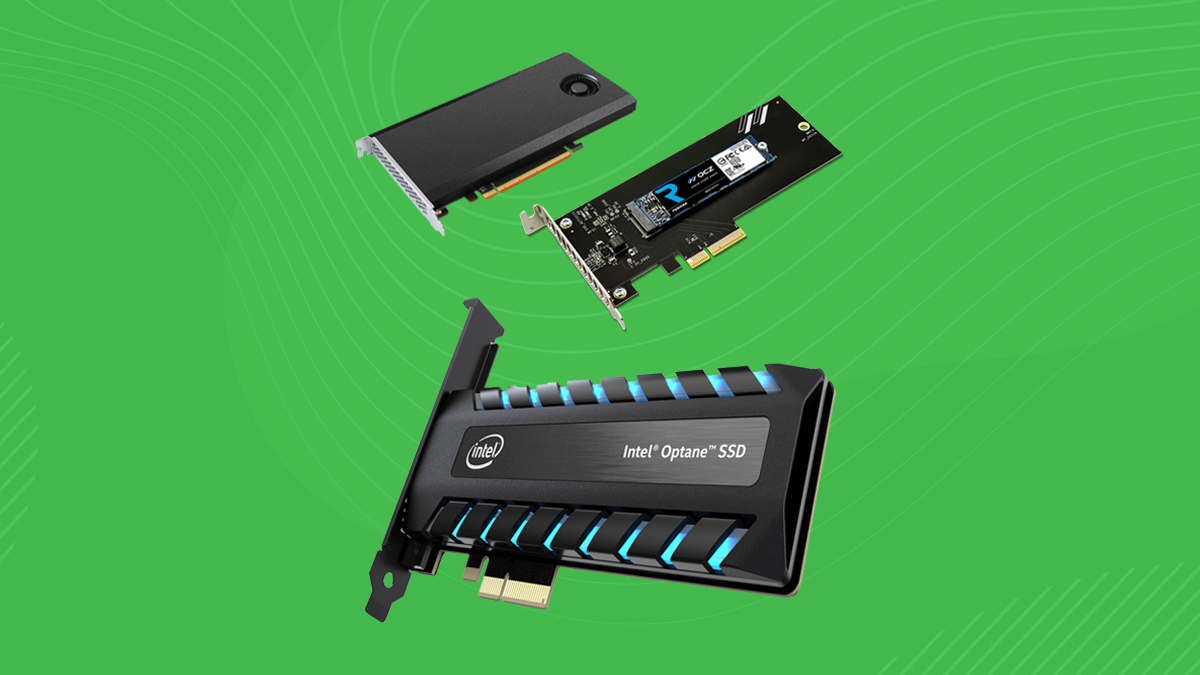
So what is a PCIe NVMe SSD? Well instead of the standard SATA interface used for transferring data, these drives use the NVMe protocol which is much faster and more reliable. Ever since these drives first debuted, they have always used PCIe lanes for connection, hence all NVMe drives are PCIe.
Long story short, NVMe is the interface used for transferring data, and the PCIe lanes on your motherboard connect that data to the system. They are available in two form factors, M.2 and Add-in cards. AICs plug into the PCIe slot just like a graphics card would.
With all of that confusion out of the way, let’s cut straight to the point. NVMe SSDs can get a bit expensive, and there isn’t a lot of variety out there when it comes to Add-in cards. To save you the headache, we’ve narrowed down the list to the five best NVMe PCIe Add-in Cards you can buy in 2021.
The Gigabyte AORUS 2TB Gen 4 AIC SSD is a high-end solid-state drive that boasts blazing-fast read and write speeds, as well as top-of-the-line sustained performance. It is designed for gamers, content creators, and other demanding users who require top-tier performance from their storage devices.
Speaking of the performance, this SSD is exceptional in this category, thanks to its PCIe Gen4x4 interface and NVMe 1.4 protocol. It is capable of delivering sequential read speeds of up to 15,000 MB/s and write speeds of up to 9,500 MB/s, making it one of the fastest SSDs on the market. It also has impressive random read and write speeds of up to 1,000K IOPS, which ensures smooth and snappy performance even under heavy workloads.
The AORUS 2TB Gen 4 AIC SSD comes with several key features that set it apart from the competition. It has a large 2TB capacity, which provides plenty of space for storing large files and applications. You can also choose the 8TB capacity option for workstation use. Moreover, the add-in card features a sleek and modern design that looks great in any system.
It also has a built-in advanced thermal solution that includes a competent heatsink and a heatpipe, which keeps the drive cool under heavy loads. Additionally, it also features a blower-style fan that helps to dissipate heat from the drive, ensuring optimal performance even under heavy workloads.
The fan is strategically placed to provide maximum airflow to the heatsink and heatpipe, and it operates quietly to minimize noise. This is definitely a unique feature of this particular SSD as there are not many others that follow this design, mainly due to cost-cutting reasons.
Overall, the Gigabyte AORUS 2TB Gen 4 AIC SSD is an excellent choice for users who require top-tier performance from their storage devices. Its exceptional read and write speeds, large capacity, and advanced thermal solution make it one of the best SSDs on the market. While it is a bit pricey, it is well worth the investment for those who demand the best.
Our next pick is a bit more affordable than the Gigabyte option, and one that appeals to a wider range of users. The WD BLACK 1TB AN1500 is a solid-state drive that is designed for gamers and content creators who require high-performance storage. It is a PCIe Gen 3 x8 add-in card that delivers fast read and write speeds, making it an excellent choice for users who need to transfer large files quickly.
The AN1500 NVMe is a decently fast SSD that delivers sequential read speeds of up to 6,500 MB/s and write speeds of up to 4,100 MB/s. It also has impressive random read and write speeds of up to 740K IOPS, which ensures snappy performance even under heavy workloads. The AN1500 NVMe is built with a PCIe Gen 3 x8 interface, which holds it back a bit when compared to the aforementioned AORUS offering.
On the flip side, the AN1500 add-in card has several key features that set it apart from the competition. Our selected variant comes with a large 1TB capacity, but you can select other storage sizes as well. The AN1500 NVMe also features an advanced cooling solution that includes an integrated heatsink to dissipate heat and maintain optimal performance levels. Furthermore, it has customizable RGB lighting that can be easily controlled using the WD BLACK Dashboard software.
Speaking of the looks, the AN1500 NVMe features a sleek and modern design that looks great in any system. The card itself is black with a stylish cover and a large heatsink that covers the length of the card. The RGB lighting adds a nice touch of style and can be customized to match the user’s preferences.
The WD BLACK AN1500 NVMe is an excellent choice for gamers and content creators who require high-performance storage at a relatively affordable price point. It delivers impressive read and write speeds, has a large capacity, and comes with an advanced cooling solution. The customizable RGB lighting adds a nice touch of style and allows users to personalize their system.
While it may not be as fast as some of the more expensive NVMe SSDs on the market, the AN1500 NVMe provides excellent value for the price and is definitely worth considering. It is definitely one of the best value SSDs to be available in this configuration, especially when you consider the price premium of an add-in card.
Our next entry on the list is one for the workstation users as well as mainstream consumers. The Samsung SSD 1.6TB PM1725a is a high-end solid-state drive that is designed for enterprise-level users who require top-tier endurance and reliability. It is a PCIe Gen 3 x8 NVMe drive that boasts fast read and write speeds and a large capacity.
By numbers alone, the PM1725a delivers exceptional performance, with sequential read speeds of up to 6,400 MB/s and write speeds of up to 3,800 MB/s. It also has impressive random read and write speeds of up to 1,000K IOPS, which ensures consistent performance even under heavy workloads. The PM1725a is built with a PCIe Gen3 x8 interface and features Samsung’s V-NAND technology, which provides high endurance and reliability.
Of course, the PM1725a has several key features that make it an excellent choice for enterprise-level users. It has a large 1.6TB capacity, which provides plenty of space for storing large files and applications. Additionally, it has advanced error correction and thermal management features, which ensure high reliability and long-term durability. The PM1725a also features a minimalistic and modern design, with a black and silver color scheme that looks great in any system.
The exterior is as stylish as it is functional. The entire SSD is covered with a large heatsink that extends across the length of the drive. The heatsink is designed to dissipate heat and maintain optimal performance levels. However, it is worth noting that the PM1725a is slightly prone to overheating under heavy workloads since it lacks active cooling, which can affect its performance and reliability.
At the end of the day, the Samsung SSD PM1725a is an excellent choice for enterprise-level users who prioritize stability and reliability. It delivers exceptional read and write speeds, has a large capacity, and features advanced error correction and thermal management features. It is limited to PCIe 3.0 speeds, but the overall package is definitely still worth consideration.
Moving on, the Intel P4800X Optane is a unique solid-state drive that is designed for enterprise-level users who prioritize endurance and stability over everything else. It uses Intel’s 3D XPoint technology, which offers significant improvements over traditional NAND flash technology in terms of durability and performance.
The P4800X Optane delivers respectable performance, with sequential read speeds of up to 2,500 MB/s and write speeds of up to 2,000 MB/s. It also has impressive random read and write speeds of up to 550K IOPS, which ensures consistent performance in a variety of scenarios. However, it is worth noting that the P4800X Optane is relatively expensive per gigabyte and has mediocre performance compared to some of the other SSDs on the market.
On the other hand, the P4800X Optane has several key features that make it an excellent choice for enterprise-level users. It has superior endurance and reliability compared to traditional NAND flash SSDs, which makes it ideal for use in high-transaction environments. The P4800X Optane also features advanced error correction and thermal management features, which ensure high reliability and long-term durability.
Aesthetics are not a major concern for Intel here, which is why the P4800X Optane has a simple and functional design with a black and silver color scheme. It features a large heatsink that covers the length of the drive, which is designed to dissipate heat and maintain optimal performance levels. While the design may not be the most stylish or modern, it is highly functional and effective.
Essentially, the Intel P4800X Optane is an excellent choice for workstation and productivity-focused users who require high reliability and endurance. The reliable 3D XPoint technology combined with the supreme durability make it a solid choice for essential data storage.
On the flip side, however, the Optane P4800X does not deliver the best value options when it comes to storage sizes. Therefore, it may not be the ideal choice for users who are after the highest bang for the buck.
Our last pick of the day is the Intel 750 Series Solid State Drive, which is a high-performance SSD that is designed for gamers and power users who require supreme performance. It features a MLC NAND configuration, which offers improved performance and endurance compared to other types of NAND flash memory.
While TLC NAND has become the standard in most modern SSDs, there are still advantages to MLC configurations. MLC is considered superior to TLC because it has higher endurance, which means it can handle a greater number of write cycles before wearing out.
This is because MLC stores two bits of data per memory cell, while TLC stores three bits per cell. This makes MLC more reliable and less prone to data errors, as each memory cell is used less frequently. MLC also has faster write speeds than TLC, which makes it better suited for high-performance applications.
The 750 Series delivers respectable performance, with sequential read speeds of up to 2,400 MB/s and write speeds of up to 1,200 MB/s. It also has impressive random read and write speeds of up to 440K IOPS, which is an acceptable metric for a drive of this caliber. However, the 750 Series is relatively expensive and has a bit worse performance compared to some of the other SSDs mentioned on this list.
Still, the Intel 750 Series has several features that make it an excellent choice for gamers and power users. The 750 Series SSDs from Intel are generally considered to be extremely reliable as they can endure a lot of read/write cycles before wearing out. Moreover, our selected variant has a large capacity of 1.2TB, which provides ample space for storing large games and applications.
Aesthetically, the 750 Series has a simple and functional design, with a silver and black color scheme. It features a large heatsink that covers the length of the drive, which is designed to dissipate heat and maintain optimal performance levels. The design does not have any extra bells and whistles, and Intel has even omitted the inclusion of a backplate here. There is no active cooling on the drive either.
Conclusively, the Intel 750 Series add-in card SSD is an excellent choice for gamers and general users who want stable and reliable performance. The MLC NAND configuration is a standout feature that offers great performance and endurance, making it well-suited for gaming and other high-performance applications.
However, the sequential speed figures fall in the middle of the pack and the price is fairly high when compared with other options, which is definitely a point to be considered before purchase.

 Check Price
Check Price